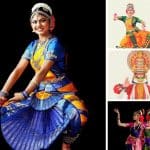The story of the Buddha
- Name: Siddhartha/ Gautam
- Birth: Around 2500 years ago
- Founder of Buddhism.
- He belonged to the Sakya gana and was a Kshatriya.
- He left home at a young age in search of knowledge.
- He wandered for several years, meeting and holding discussions with other thinkers.
- He attained enlightenment under a peepal tree at Bodh Gaya in Bihar. And came to be known as Buddha or the Wise One.
- For the first time he taught at Sarnath near Varanasi. The Stupa at Sarnath was built to mark the place where he first taught his message.
- He taught in Prakrit, the language of the ordinary people.
- He passed away at Kusinara.
Read More: Class 6 Ch 6 History- Kingdoms, Kings & an Early Republic
- Life is full of suffering and unhappiness which is caused due to unfulfilled desires.
- Even if we get what we want, we are never satisfied. This he described as thirst or tanha.
- This constant craving could be removed by following moderation in everything.
- He taught people to be kind and to respect the lives of others, including animals.
- The results of our actions (karma) affect us both in this life and the next.
Upanishads (2500 years ago)
- Upanishads literally mean ‘approaching and sitting near’ and the texts contain conversations between teachers and students.
- These were part of the Later Vedic texts.
- Most Upanishadic thinkers were men, especially brahmins and rajas.
- Gargi was a female thinker, famous for her learning, and participated in debates held in royal courts.
- Satyakama Jabala had a deep desire to learn about reality, was accepted as a student by a brahmin teacher named Gautama, and became one of the best known thinkers of the time.
- The upanishadic thinkers believed that atma and brahman were one.
- Many of the ideas of the Upanishads were later developed by the famous thinker Shankaracharya.
Read More: Class 6 Ch 5 History- What Books & Burials Tell Us
- He prepared a grammar for Sanskrit.
Jainism (2500 years ago)
- Mahavira was a Kshatriya prince of the Lichchhavis, a group that was part of the Vajji sangha.
- He left home at the age of thirty and attained enlightenment after 12 years.
- His followers came to be known as Jainas, derived from the term jina, meaning conqueror.
Teachings of Mahavira
- He taught in Prakrit.
- Men and women who wished to know the truth must leave their homes.
- Ahimsa should be followed strictly.
- Jainas had to lead very simple lives and had to beg for food.
- They had to be honest and were especially asked not to steal.
- They had to observe celibacy.
- Men had to give up everything including their clothes.
- The teachings of Mahavira and his followers were transmitted orally for several centuries.
- They were written down in the form in which they are presently available at a place called Valabhi in Gujarat about 1500 years ago.
Sangha
- Mahavira and Buddha felt that only those who left their homes could gain true knowledge. They formed Sangha, an association of those who left their homes.
- Vinaya Pitaka was a book that contained the rules made for the buddhist sangha.
- There were separate branches for men and women.
- All men could join the sangha.
- Children had to take the permission of their parents, slaves that of their masters. Women had to take their husband’s permission, debtors that of creditors.
- Those who joined sangha had to lead simple lives meditating most of the times.
- They went to cities and villages begging for food and were known as bhikkus and bhikkunis.
Monasteries
- Jain and Buddhists monks went from place to place throughout the year to teach people, resting only during the rainy season.
- Their supporters built temporary shelters for them in gardens, or they lived in natural caves in hilly areas.
- Later, permanent shelters in the form of monasteries, were built. These were known as viharas.
The Ashrama system
- At this time, brahmins came up with the ashrama system.
- These are stages of life.
- Brahmacharya, Grihastha, Vanaprastha and Sanyasa were the four recognized ashramas.
- Brahmacharya: Brahmin, Kshatriya and Vaishya men were expected to lead simple lives and study the Vedas during the early years of their lives.
- Grihastha : They had to marry and live as householders.
- Vanaprastha: They had to live in the forest and meditate.
- Sanyasa: They had to give up everything and become sanyasis.
- Women were not allowed to study the Vedas and had to follow the ashramas chosen by their husbands.











